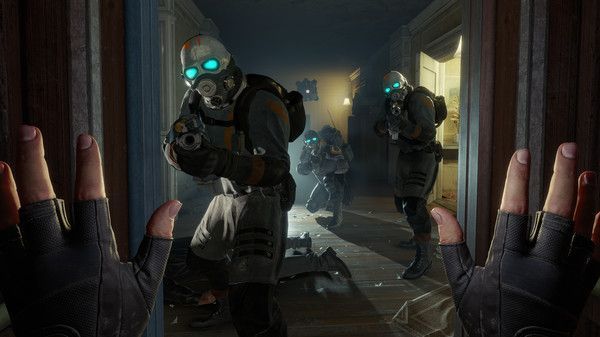Perhaps once thought of as a ‘fad’ technology, or a gimmick that would soon fade into obscurity much like many of the other accessories and peripherals that have been offered up to gamers over the years, virtual reality is stronger than ever. In 2020, it’s never been a more exciting time to be involved with the technology.
From the impending launch of Valve’s flagship SteamVR title Half-Life: Alyx, to the growing use of virtual reality outside of the games industry, in business and even immersive staff training, the technology is permeating the mainstream more than ever before. Here’s a deeper dive on those two mentioned arms of virtual reality specifically, showing how the technology is making strides going forward into the new decade.
VR’s Killer App
Valve’s return to the Half-Life series after 13 years comes in the form of a pioneering fully-fledged virtual reality title, innovating with this medium in the same way that the first two Half-Life games did in terms of narrative and game design back when they released. While it will be a little expensive to get started with the setup that you need to play, it is compatible with a wide range of different headsets, making it as accessible as possible.
One exciting aspect of Half-Life: Alyx from a technological perspective is the freedom of movement and the different options that it provides for traversing a virtual world, dependent on your preference. Players can choose to walk normally in a 1:1 range of motion if they have the room within their play space, be moved automatically, or teleport to a selected destination if the jarring automatic movement is too nauseating. These sorts of adapted movement styles are perhaps going to be adopted as the standard in the industry going forward, and move us one step closer to being within a fully visualised world that we can walk around in and interact with physically, rather than something that’s just there to be observed.

Usages outside of the gaming industry
Despite originating in the gaming sphere, the possibilities of VR far extend just video games. In fact, they can provide a window of immersion and assistance in a range of different industries. This trend will continue to increase throughout 2020 and over the next ten years, being interweaved with augmented reality and perhaps even changing the way that we live out our daily lives or work schedule by 2030.
For those that might not have thought about how VR is being used in an intelligent way outside of virtual reality, here are a few key examples:
In the property industry, namely property investment and development within big cities, VR has become an invaluable piece of kit, helping potential investors to visualise their next investment strategy, often before it has even been built. RWinvest, for example, a property company that specialises in ‘off-plan’ developments in UK cities (developments that are still in planning or construction phases), utilise a ‘virtual viewing’ process using VR headsets in order to give their clients a feel for what their property will be like. This next-level imagery is more convincing than a standard CGI or blueprint, and so helps to remove some of the uncertainty in investing in something that is not yet measurable.
Another side-usage within the property industry, particularly with the overlaid ‘augmented reality’ software, is interior design. Those that are redecorating their property could use software to get a glimpse as to what their house might look like if they were to go ahead with renovations as they had planned, saving a ton of money if they aren’t happy with it and giving them reassurance if they are.
One other extremely impressive usage of the technology is its use for training staff, and highly skilled professionals, such as surgeons and even astronauts. Some trainee surgeons use VR headsets to get a first-person perspective on open surgery, for example, something that you can’t really practice in real life without putting someone in danger. Some studies have shown this innovative use of the technology to be highly beneficial, and it’s using the software to do something that was previously never possible.
NASA also use VR headsets as part of their advanced and expensive training facilities, helping to condition trainee astronauts and prepare them for what it’s like when they eventually leave the Earth’s atmosphere. It seems, then, that the potential for virtual reality going forward is out of this world.






 Your total news and information resource for all things Science, Technology, Engineering / Mathematics, Art, and Medicine / Health.
Your total news and information resource for all things Science, Technology, Engineering / Mathematics, Art, and Medicine / Health.
Leave a Comment